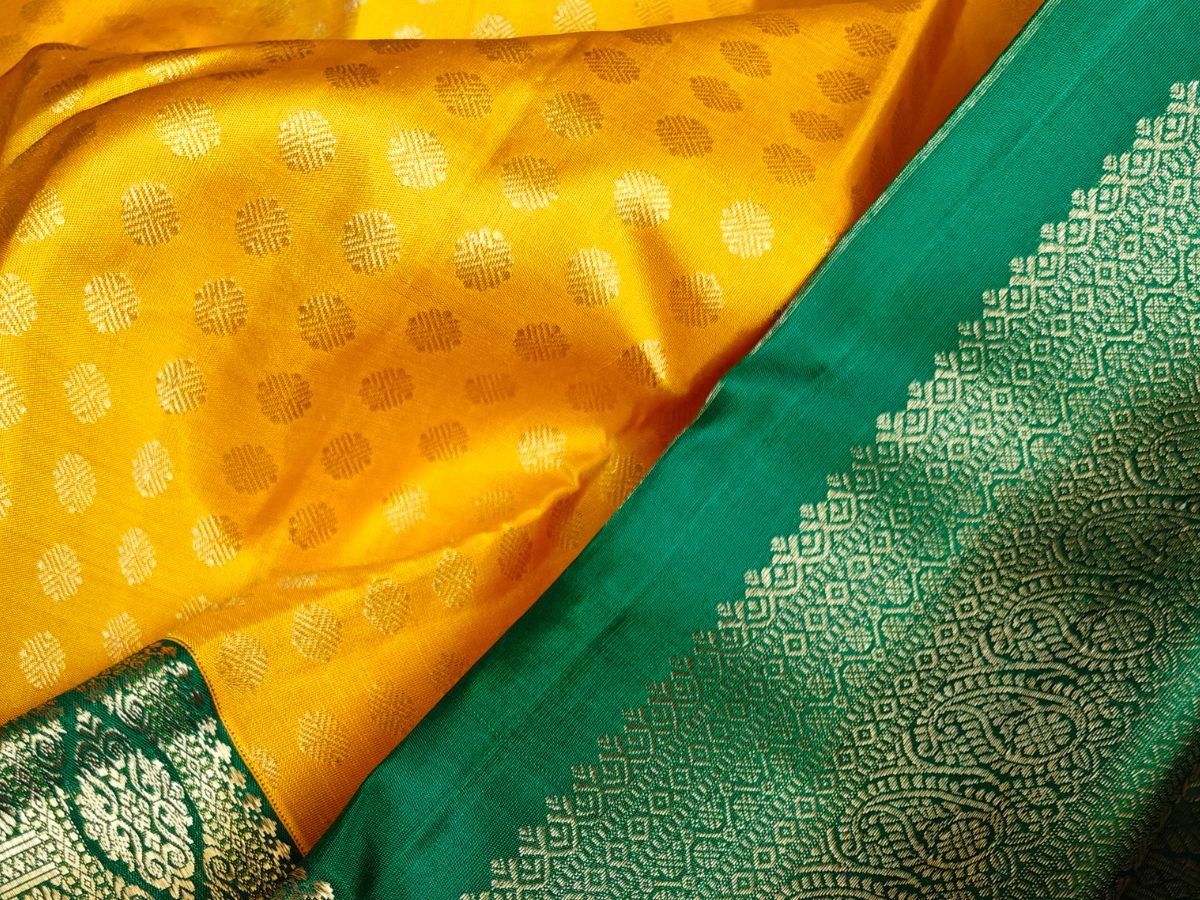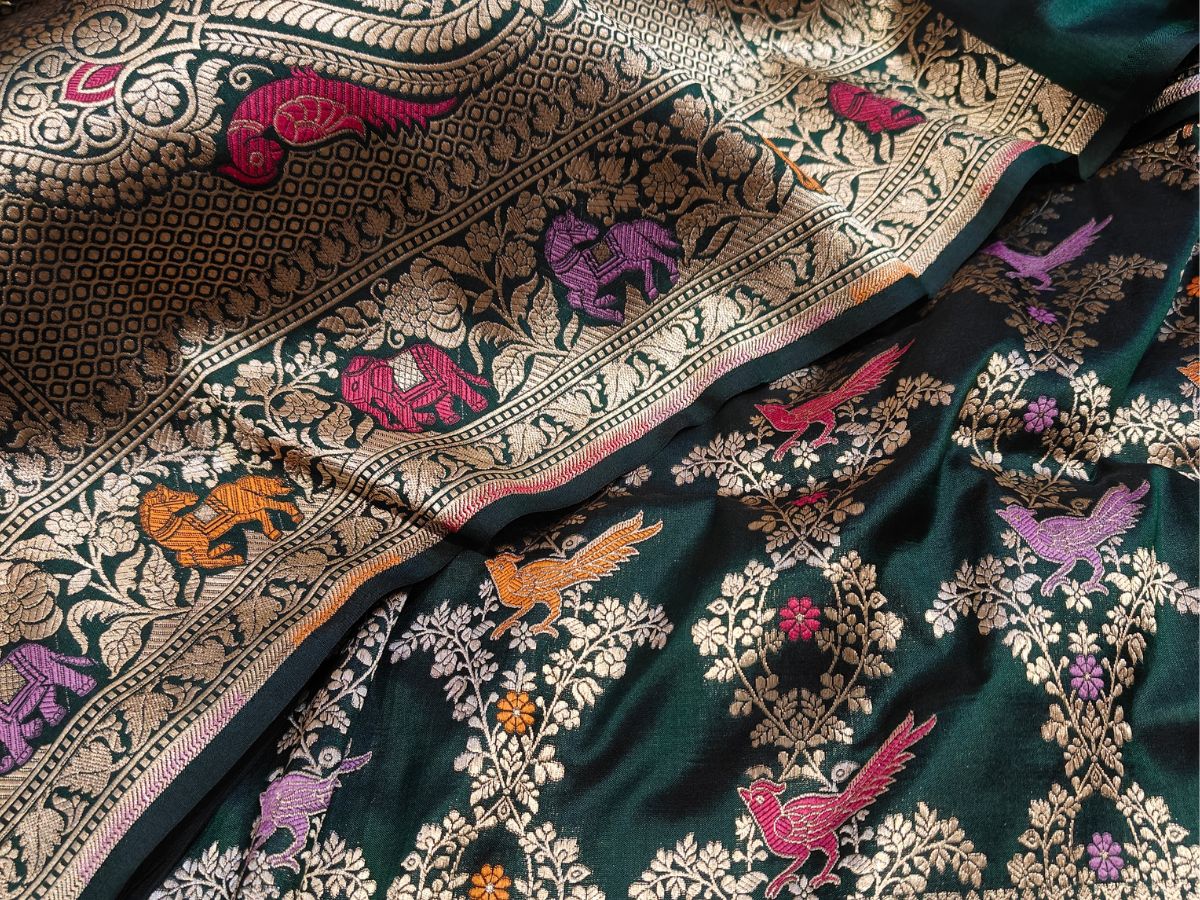The Sari Odyssey- Era of Poise and Dexterity

Every woman would remember the first time she has ever draped and waltzed around in the six-yard beauty.
The most representative apparel of India continues to take the center stage and is styled by women from all walks of life with a utilitarian approach.
Have you ever wondered how did this versatile marvel find its way to your wardrobe?
Artisans have beautifully carried the knowledge of weaving as an inheritance from past generations. The technique, structure, fabric, motifs, and zari beautifully make up the lingua of the saree, and an intricately handwoven saree is a testimony to the artistry of our artisanal families.
An Ancient South Asian Tinge: Entire spectrum of the evolution of saree began with the cultivation of cotton. The Indus River Valley in Pakistan reared cotton 3000 years BC and the fiber spun into the yarn was used to make the soft and breathable textile. Sculptures of Gandhara of the Mathura and Gupta period showed Goddesses and dancers draped in the present Indian men’s attire ‘dhoti’ or ‘sarong’ believed to be an antecedent of the saree worn by men and women until the fourteenth century. Many poetic references from ancient works like Silappadhikaram indicate that during the Sangam period, a single piece of clothing served as a lower garment as well as a torso and head covering.
The Greek and Persian Influence: On the arrival of Alexander during the Mauryan Era, the saree got influenced further by the Greeks and Persians. Through the exchange of traditions and intermarriages, the Greek style of clinching their long flowing robes with a belt at the waist popularized. The affluent class of Indian women adopted this manner of draping also seen in the statue of Kannagi, a mythical woman from the city of Madurai, Tamil Nadu. The art of stitching was introduced to the Indians by the Persians who wore their robes stitched and held together at the shoulder.
The Mughal Inception: Under the Mughals, Indian cotton production increased as they introduced agrarian reforms providing state incentives to grow the cotton crops pertaining to the rising market demand. The rise of Mughals in India encouraged women to cover their head and bosom with a separate cloth, as sculptures from the Mauryan and Sunga periods (about 300BC) clearly depicted women wearing one rectangular piece of fabric covering their body. They were also extremely fond of lavish silks and introduced up gradation in saree materials such as intricate hand embroidery, embellishments, and usage of around five hundred natural dyes for fabric. Our handwoven Banarasi collections with Mughal inspired motifs and impression are synonymous with these weaves of the noble. During this era, the advancements in saree were well documented as manuscripts and miniature paintings.
The Yarn of the British decree: The advent of British rule brought about a huge change in the manner of draping a saree. To satisfy the Victorian’s ideas of modesty, the petticoat or the blouse was introduced as in India wearing a blouse was more caste oriented than propriety. Jnanadanandini Debi, sister-in-law of the great poet Rabindranath Tagore popularized blouses, jackets, chemises, and high necked Victorian blouses as reportedly she was refused entry to clubs under the British for not wearing a blouse. It imposed a standard of decency and public decorum on the Indian population as opportunities for education and socializing escalated. Another sister-in-law of Rabindranath Tagore, Kadambari Devi introduced the draping of sarees with pleats. She even advertised in newspapers to inspire women to learn the art of draping.
Though the journey of the quintessentially Indian attire is as complex as its pleats, it has indeed traveled a full circle!
At Dakshinam Sarees, our artisans are ever dedicated to the sustenance of our priceless tradition and capturing the essence of the fabric that binds and strengthens every cultural difference into one whole entity.










